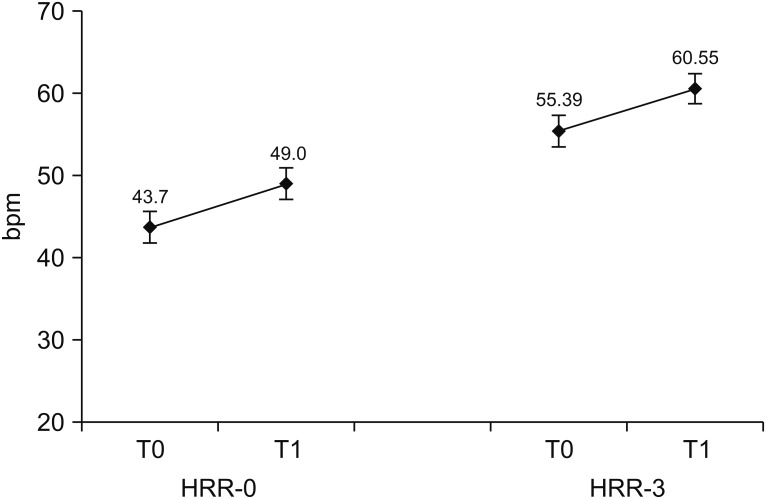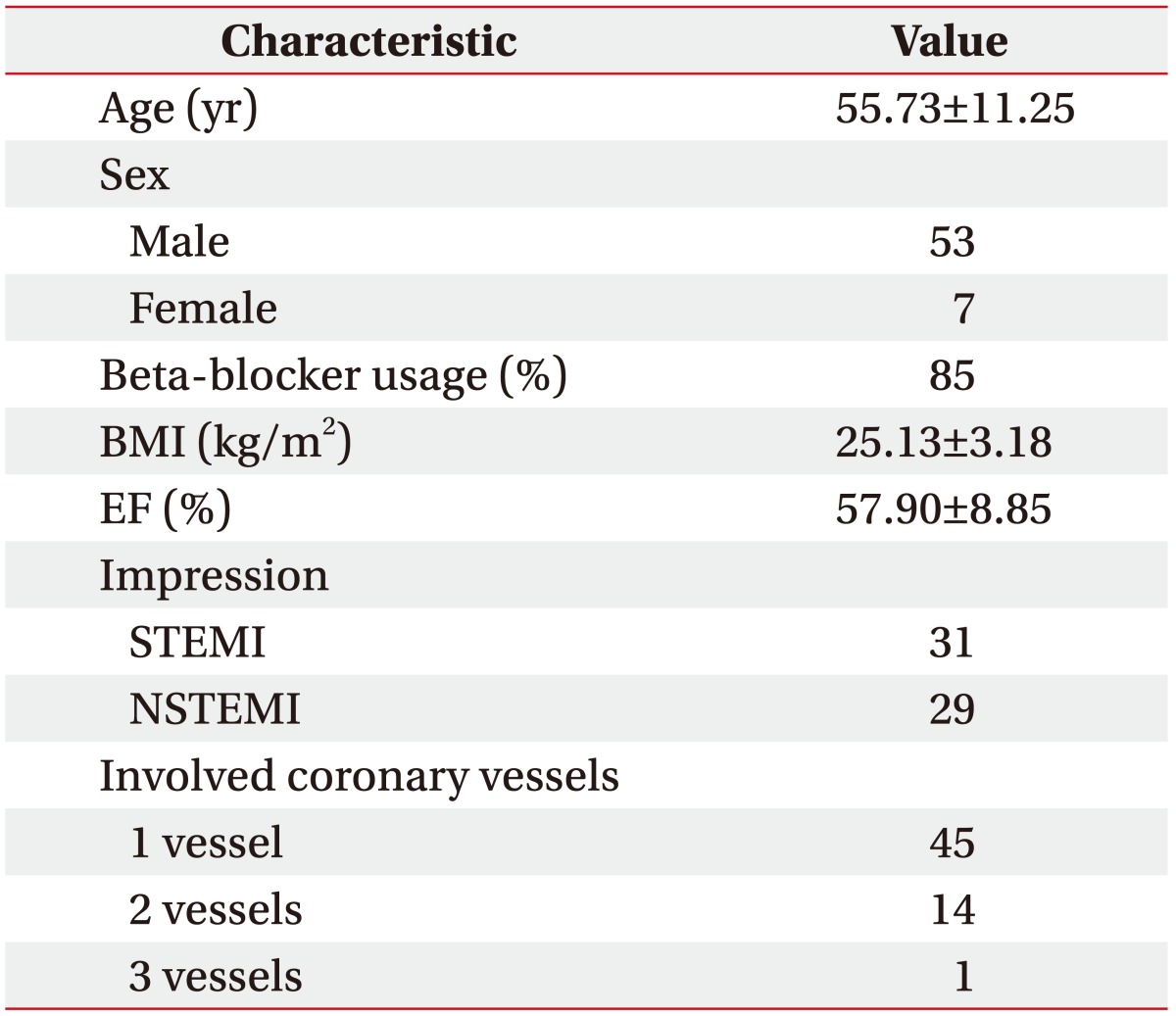INTRODUCTION
MATERIALS AND METHODS
RESULTS
General characteristics of subjects
Variables at 3 weeks after AMI onset and 3 months after first ETT
 | Fig. 1The heart rate recovery (HRR) at 3 weeks after acute myocardial infarction (T0) and 3 months after first exercise tolerance test (T1). HRR-0, maximal heart rate - heart rate immediately after cool down period; HRR-3, maximal heart rate - heart rate measured 3 minutes after completion of exercise tolerance test. |
Table 2
Variables before and after home-based cardiac rehabilitation

Values are presented as number or mean±standard deviation.
T0, exercise tolerance test at 3 weeks after acute myocardial infarction; T1, exercise tolerance test at 3 months after T0; HRrest, resting heart rate; HRmax, maximal heart rate; HRR, heart rate recovery; HRR-0, maximal heart rate - heart rate immediately after cool down period; HRR-3, maximal heart rate - heart rate measured 3 minutes after completion of exercise tolerance test; VO2max, maximal oxygen consumption; METmax, maximal metabolic equivalents; SBPrest, resting systolic blood pressure; DBPrest, resting diastolic blood pressure.
*p<0.05.
Correlation between HRR and cardiopulmonary exercise capacity
Table 3
Correlation between HRR and cardiopulmonary exercise capacity

HRR, heart rate recovery; T0, exercise tolerance test at 3 weeks after acute myocardial infarction; T1, exercise tolerance test at 3 months after T0; VO2max, maximal oxygen consumption; METmax, maximal metabolic equivalents; HRR-0, maximal heart rate - heart rate immediately after cool down period; HRR-3, maximal heart rate - heart rate measured 3 minutes after completion of exercise tolerance test.
*p<0.05.
Correlation between HRR at T0 and changing cardiopulmonary exercise capacity ratio
Table 4
Correlation between HRR at T0 and changing ratio of cardiopulmonary exercise capacity

HRR, heart rate recovery; T0, exercise tolerance test at 3 weeks after acute myocardial infarction; T1, exercise tolerance test at 3 months after T0; VO2max, maximal oxygen consumption; METmax, maximal metabolic equivalents; HRR-0, maximal heart rate - heart rate immediately after cool down period; HRR-3, maximal heart rate - heart rate measured 3 minutes after completion of exercise tolerance test.
Changing ratio of VO2max=(VO2max at T1-VO2max at T0)/VO2max at T0×100.
Changing ratio of METmax=(METmax at T1-METmax at T0)/METmax at T0×100.
*p<0.05.
Table 5
Multivariate regression analysis for the correlation between HRR at T0 and changing ratio of cardiopulmonary exercise capacity

HRR, heart rate recovery; VO2max, maximal oxygen consumption; METmax, maximal metabolic equivalents; CI, confidence interval; BMI, body mass index; EF, ejection fraction; HRmax, maximal heart rate; HRR-0, maximal heart rate - heart rate immediately after cool down period; HRR-3, maximal heart rate - heart rate measured 3 minutes after completion of exercise tolerance test; T0, exercise tolerance test at 3 weeks after acute myocardial infarction; T1, exercise tolerance test at 3 months after T0.
Changing ratio of VO2max=(VO2max at T1-VO2max at T0)/VO2max at T0×100.
Changing ratio of METmax=(METmax at T1-METmax at T0)/METmax at T0×100.
*p<0.05.




 PDF
PDF ePub
ePub Citation
Citation Print
Print




 XML Download
XML Download